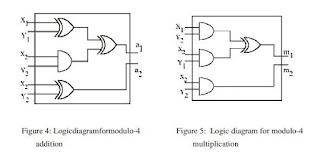Mehdi Ghasemi1,2, Mohammad Hossein Moaiyeri1,2, and Keivan Navi1,2
1Faculty of Electrical and Computer Engineering, Shahid Beheshti University G.C., Tehran, Iran.
2Nanotechnology and Quantum Computing Lab, Shahid Beheshti University G.C., Tehran, Iran.
ABSTRACT
Due to high power consumption and difficulties with minimizing the CMOS transistor size, molecular electronics has been introduced as an emerging technology. Further, there have been noticeable advances in fabrication of molecular wires and switches and also molecular diodes can be used for designing different logic circuits. Considering this novel technology, we use molecules as the active components of the circuit, for transporting electric charge. In this paper, a full adder cell based on molecular electronics is presented. This full adder is consisted of resonant tunneling diodes and transistors which are implemented via molecular electronics. The area occupied by this kind of full adder would be much times smaller than the conventional designs and it can be used as the building block of more complex molecular arithmetic circuits.
KEYWORDS
Logic circuits, full adder, nanotechnology, molecular electronics, resonant tunneling diode (RTD)
Original Source URL: https://aircconline.com/vlsics/V2N4/2411vlsics01.pdf
https://airccse.org/journal/vlsi/vol2.html






